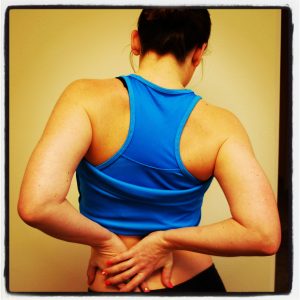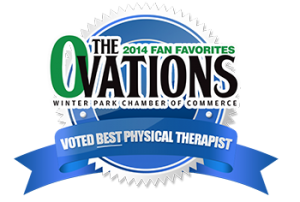- “I need to strengthen my core!” What is the role of core stability training?
“Working the core” has become a huge focus of rehabilitation of athletes and non athletes in recent years. The belief that the spines stabilising muscles become inhibited with back pain rendering the spine ‘unstable’ and ‘vulnerable’ drives this. Yet growing evidence tells us that disabling persistent back pain disorders are often associated with increased trunk muscle co-contraction, earlier activation of the transverse abdominal wall and an inability to relax the spines stabilising muscles such as lumbar multifidus (Geisser, Haig et al. 2004, Dankaerts, O’Sullivan et al. 2009, Gubler, Mannion et al. 2010). This increase in co-contraction can increase spine stiffness and alter biomechanical loading reinforcing pain.
A number of high quality randomised controlled trials have compared stabilisation training to various forms of exercise, manual therapy and placebo. These studies highlight that this approach is not superior to the other active therapies and only marginally superior to a poor placebo, with only minimal changes in pain and moderate reductions in disability (Ferreira, Ferreira et al. 2006, Ferreira, Ferreira et al. 2007, Costa, Maher et al. 2009). Recent studies have also demonstrated that positive outcomes associated with stabilisation training are best predicted by
reductions in catastrophising rather than changes in muscle patterning (Mannion, Caporaso et al. 2012 ), highlighting that non-specific factors such as therapeutic alliance and therapist confidence may be the active ingredient in the treatment – rather than the desired change in muscle.
 Do you really need to focus on “core stability” ? We have the answers for you below, and here are 4 common mis-understandings of back pain
Do you really need to focus on “core stability” ? We have the answers for you below, and here are 4 common mis-understandings of back pain
 Commonly in clinical practice, back pain is considered from a purely biomedical perspective, where radiological imaging is the basis for diagnosis. Athough MRI and other imaging has an important role in the triage of people with back pain to identify fractures, cancer and nerve root compression in 1-2% of people, it also puts the spotlight on many patho-anatomical findings that are not related to back pain (O’Sullivan and Lin 2014). Disc degeneration, disc bulges, annular tears and prolapses are highly prevalent in pain free populations, are not strongly predictive of future low back pain and correlate poorly with levels of pain and disability (Deyo 2002, Jarvik JG 2005).
The adverse effects of early MRI imaging for LBP, highlight the risk of iatrogenic (caused by the health system) disability if spinal imaging is not communicated carefully and matched to the presenting disorder (Webster BS 2010, McCullough, Johnson et al. 2012). Even when specific pathologies exist, it is crucial to consider all relevant bio-psycho-social domains of the examination, clinical reasoning and management process (O’Sullivan and Lin 2014).
Commonly in clinical practice, back pain is considered from a purely biomedical perspective, where radiological imaging is the basis for diagnosis. Athough MRI and other imaging has an important role in the triage of people with back pain to identify fractures, cancer and nerve root compression in 1-2% of people, it also puts the spotlight on many patho-anatomical findings that are not related to back pain (O’Sullivan and Lin 2014). Disc degeneration, disc bulges, annular tears and prolapses are highly prevalent in pain free populations, are not strongly predictive of future low back pain and correlate poorly with levels of pain and disability (Deyo 2002, Jarvik JG 2005).
The adverse effects of early MRI imaging for LBP, highlight the risk of iatrogenic (caused by the health system) disability if spinal imaging is not communicated carefully and matched to the presenting disorder (Webster BS 2010, McCullough, Johnson et al. 2012). Even when specific pathologies exist, it is crucial to consider all relevant bio-psycho-social domains of the examination, clinical reasoning and management process (O’Sullivan and Lin 2014). Passive manual therapies do not prevent nor change the natural history of back pain; they have a limited role in the management of persistent back pain disorders (Rubinstein, Middelkoop et al. 2009). Passive manual therapies can provide short-term pain relief. Beliefs such as ‘your sacrum, pelvis or back is out place’ are common among many clinicians.
These beliefs can increase fear, anxiety and hypervigilance that the person has something structurally wrong that they have no control over, resulting in dependence on passive therapies for pain relief (possibly good for business, but not for health). These clinical beliefs are often based on highly complex clinical algorithms associated with the use of poorly validated and unreliable clinical tests (O’Sullivan and Beales 2007). Apparent ‘asymmetries’ and associated clinical signs relate to motor control changes secondary to sensitised lumbo-pelvic structures, not to bones being out of place (Palsson, Hirata et al. 2014). In contrast, there is strong evidence that movements of the sacroiliac joint is associated with minute movements, which are barely measurable with the best imaging techniques let alone manual palpation (Kibsgård, Røise et al. 2014).
Passive manual therapies do not prevent nor change the natural history of back pain; they have a limited role in the management of persistent back pain disorders (Rubinstein, Middelkoop et al. 2009). Passive manual therapies can provide short-term pain relief. Beliefs such as ‘your sacrum, pelvis or back is out place’ are common among many clinicians.
These beliefs can increase fear, anxiety and hypervigilance that the person has something structurally wrong that they have no control over, resulting in dependence on passive therapies for pain relief (possibly good for business, but not for health). These clinical beliefs are often based on highly complex clinical algorithms associated with the use of poorly validated and unreliable clinical tests (O’Sullivan and Beales 2007). Apparent ‘asymmetries’ and associated clinical signs relate to motor control changes secondary to sensitised lumbo-pelvic structures, not to bones being out of place (Palsson, Hirata et al. 2014). In contrast, there is strong evidence that movements of the sacroiliac joint is associated with minute movements, which are barely measurable with the best imaging techniques let alone manual palpation (Kibsgård, Røise et al. 2014). This is what our patients are saying:
This is what our patients are saying:
 reference:
reference:






